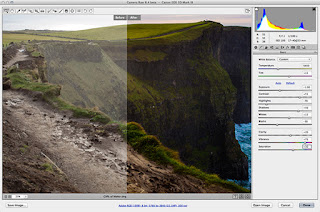
Okay, now back to actually tweaking our white balance. Find an image whose white balance is off, correct the white balance on both images in ACR, and compare the results.

The next time you’re out shooting, change your camera to shoot in RAW + JPEG mode. JPEG images is not a myth, and you can test this for yourself. However, the fact that white balance adjustments look better when performed on RAW images vs. You can change it using the Temperature and Tint sliders and the White Balance tool (and I use those two the most anyway). When you shoot in JPEG, the white balance preset you chose in your camera is baked into the image, so the only preset available in the drop-down menu will be Auto.īecause of this, there’s a myth that you can’t change the white balance for JPEG images, but that’s not true. When you open a RAW image in ACR, it initially displays the white balance choice you made in camera, but there’s a White Balance preset drop-down menu where you can actually pick your white balance after the fact. But before we get into these different methods, let’s discuss the difference between RAW and JPEG when it comes to white balance. There are three different ways to set your white balance in Adobe Camera Raw (ACR): the Temperature and Tint sliders, the White Balance presets drop-down menu, and the White Balance tool. (Don’t forget these techniques work for the Develop module in Lightroom, as well.) Setting your white balance is one of the most important edits you make in Camera Raw because if you do it right, your color will be spot on, and you won’t have any color correction problems to deal with later in Photoshop.


 0 kommentar(er)
0 kommentar(er)
